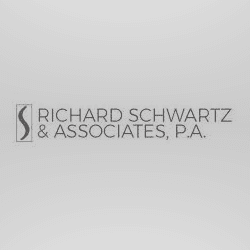EEOC Enforcement Guidance on Use of Criminal Records
The anticipated “new” Guidance in EEOC on criminal records was issued on April 25, 2012 and became generally available on April 27, 2012. In summary, the new Guidance is a refinement of existing restrictions rather than an overhaul of the existing standards. One might say this announcement may be interpreted as an attempt to “get serious” about the existing standards. The original standards were adopted on February 4, 1987. These long standing guidelines are basically:
- Consider the nature and seriousness of the offense;
- Consider the length of time since the conviction/release from confinement; and
- Consider the nature of the job (how does the criminal conduct relate to the job).
The EEOC’s actions are in response to a serious social concern. In its report it acknowledged that 1 in 3 African-American males have a criminal record. Some statistics we have reviewed shows that the rate is 3 out of 4 in some inner cities. As a society, such a large group cannot be permanently unemployable. If they cannot obtain employment they have no choice but to continue a life of crime to the detriment of everyone. On the other hand, the EEOC acknowledges the legitimate concerns of employers regarding the potential risk ex-convicts pose.
Much of the 26 pages of text cover the legal principal of adverse impact. Adverse impact deals with neutral employment policies that have a disproportate impact upon minorities. It is unintentional discrimination. The EEOC discussion closely follows the presentations by Art Cohen and Larry Henry presented at past NAPBS conferences. You may wish to visit those materials again on the NAPBS website.
The bottom line is that the EEOC wants employers to individually assess each applicant/employee who may be screened out because of a criminal record. This follows the process under the Americans with Disabilities Act (“ADA”). Generally, the EEOC wants to add a pre-adverse action process similar to that currently existing under the FCRA. Thus all employers will have this type of process, although not as formally set forth for information contained in consumer reports under the FCRA. This for CRA customers the process will not be new, however the review period prior to taking adverse action may be longer than provided under the FCRA.[1] This process will first determine if the report is inaccurate or reflects the current status of a record (has the conviction been expunged?). Again, nothing new to CRAs or their customers here. The Guidance does not make databased reports illegal, but the EEOC acknowledges the problems with them and this review period will protect the consumer from inaccurate or outdated records.
If the record is in fact correct, then the employer must assess the risk that person may pose, not only using the three factors above, but also such things as consideration of evidence of rehabilitation (training, evaluation, professional help); a record of employment showing no harm for the potential risk and/or character references. It seems that the evidence of prior successful employment after a conviction is a very important factor to the EEOC. Frankly, a good work record may be the best evidence of rehabilitation. This consideration presents business opportunities for the consumer reporting agencies to conduct more job verifications. However, these type of reports will be investigative consumer reports because the report must include an evaluation of a person’s work. A list of the “new” considerations is attached to this Alert.
The EEOC acknowledges that not all crimes must be individually assessed, but it gives no examples. However, one would assume that those convicted as being a child molester do not receive individual assessment when applying for work as child care workers. Although one EEOC example did accept rejection of an employee who had a recent conviction for theft where the employee will handle credit card charges and also have access to customers’ personal property, unfortunately most of the examples used by the EEOC are so obvious that they provide little guidance. The real world presents far more hairsplitting situations than are in the examples.
How does this new Guidance impact the CRA? It would seem that an employer outsourcing adjudication is a very risky procedure. At least as how it is done today. The CRA does not seem to be a position to individually assess an individual for a particular job. That being said, a matrix of crimes and positions seems to be a first step for an employer to comply for the nondiscriminatory use of criminal records. The EEOC wants the employer to document who helped create the matrix – so they want to see professional assistance. That matrix must be job/position specific, examining individual crimes and take into account how long ago the crime was committed and its relationship to the job. That starts the process. If using the matrix results in an answer: “do not hire” then the employer must provide the person an opportunity to “present their case” in this review period. Not only does this deal with addressing possible inaccuracies in the report, but also explaining that they do not pose a risk to the employer. If a person fails to take advantage of the opportunity to explain, then the employer may proceed to reject the individual assuming that their matrix is appropriate in the first place.
These new rules do not overrule any federal statute or regulations that disqualify an individual for a position based upon a criminal record. However, these guidelines do pre-empt any state or local law that would disqualify someone for work under such laws.
Further, the Guidance prefers a “ban the box” approach to employment applications. The EEOC wants the issue of a criminal record to be raised after the employer has determined the person is otherwise qualified for the position. (Again, this is not unlike the consideration of disabilities under the ADA). Also, an inquiry of the individual later in the process should not be for all crimes but only those that the employer has determined are relevant to the job in question. Whether this narrowing of inquiry must be transferred to the content of a consumer report was not discussed in the Guidance, but it would seem to be a logical extension of the EEOC’s view.
To achieve this, the end user would have to inform the CRA of what types of convictions are of interest resulting in the CRA editing reports consistent with the customer’s explicit written directions. These raise the questions of whether CRA’s are comfortable with editing reports and can they do so without raising prices? Another alternative would be that reports are sent to a person in the employer’s organization who is not involved in the hiring process and that person will edit the report to follow their matrix before the decision makers see it.
The EEOC still allows consideration of arrest information to the extent that the employer can inquire about the facts behind the arrest to determine the actual conduct of the individual, but the employer cannot reject someone simply because they have been arrested.
This is the same policy that has been in place since 1987. How does an employer do this? The easiest way is simply to ask the individual. It is amazing what they will tell an employer. Otherwise, depending upon the circumstances and importance of the decision, a call to the police or prosecutor’s office may provide those facts to support a “do not hire” or “do hire” decision. Often times prosecutors are more comfortable talking with an attorney for the employer, rather than talking to a lay person. However, this is a process totally governed by local custom.
In summary, the new guidelines seek individual assessments, but the EEOC implicitly acknowledges that it is not exact science. It acknowledges that there are few, if any, true validation studies that connect a conviction to future conduct. And thus as a practical matter the individual assessment will be to model to follow rather than using studies. However, judges and juries will still use their common sense judging employers who attempt, as they should have for decades, to match crimes with jobs and those employers will be successful in defending discrimination claims. However, it is clear that the EEOC will look at the decision not to hire more closely than before.
Contact us
To learn more about the comprehensive LaborChex system and how we can create peace of mind for your business.












